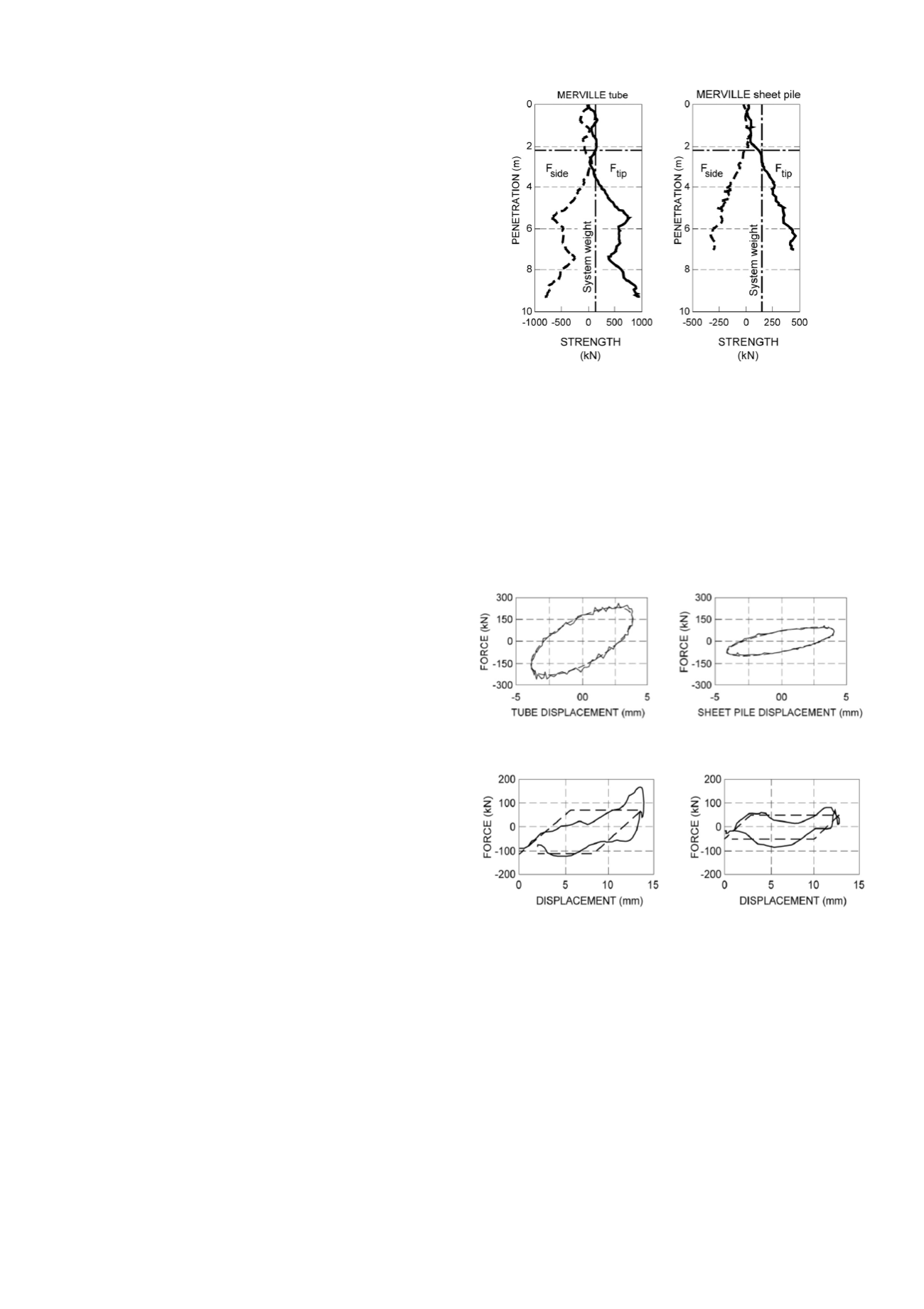

Proceedings of the 18
th
International Conference on Soil Mechanics and Geotechnical Engineering, Paris 2013, volume 6, 2016
6.3
Publications
2006 Technical Guide:
Vibratory pile driving
- Vibratory
pile driving,
Presses des Ponts et Chaussées
, ISBN 2-85978-
423-3, 282 pages. This technical guide, released in 2006,
provides answers, in light of current knowledge and extensive
experimental results, to questions raised by users of the vibratory
pile driving technique, including:
- choosing the appropriate technique and equipment;
- planning pile inserts and efficiency (BRAXUUS software);
- determining possible nuisances during pile-driving works;
- estimating the load-bearing capacity of piles once installed.
This guide includes: a text in both French and English
describing the instruments, their associated options, the existing
computation software, an analysis of pile-driving and load-
bearing capacity test results, a bibliography, a list of standards
and recommendations, and lastly internal NP reports.
Appendix A compiles a set of theoretical contributions, while
Appendix B provides a summary of the experiments, both full-
scale and in the laboratory. Appendix C presents the vibratory
pile-driving prediction software, in particular the BRAXUUS
application for the National Project (downloaded on a CD-ROM
to accompany the guide). Appendix D contains the pertinent
documentation of contractors partnering in the project.
Holeyman A., Vanden Berghe J.-F., Charue N. (2002)
TRANSVIB 2002:
Vibratory pile driving and deep soil
compaction, Balkema, ISBN 90-5809-521-5, 233 pages.
Gonin H., Holeyman A., Rocher-Lacoste F. (2006)
TRANSVIB 2006:
Proceedings of the International Symposium
on Vibratory pile driving and vibratory compaction, published
by LCPC, ISBN 2-7208-2466-6, 400 pages.
TRANSVIB is an international symposium held periodically
to convene individuals and organizations interested in vibratory
pile driving, sheet-pile driving and deep pile compaction; these
gatherings have given rise to published proceedings. The first
symposium took place in 2002 in Louvain-la-Neuve, Belgium,
and the second four years later in Paris to showcase and extend
this NP on vibratory pile driving. It would be highly beneficial to
organize a third session in the near future.
6.4
Remarkable results
6.4.1
Penetration into the soil
This discussion will merely highlight, from among the extensive
body of experimental data and their associated interpretations,
what has struck us to be especially innovative and capable of
advancing the state of knowledge and understanding of the
phenomena under observation.
For starters, all measurements of time-dependent variables
have proven to be periodic and, as such, may be broken down
into a constant value over the considered period (i.e. an average
value) and a time function whose average single-period value
equals zero. The penetration speed may be assumed constant
over a single period, with a zero average acceleration.
Yet these measurements have demonstrated that the effect of
vibrations cannot be summarized as a decrease in friction along
the pile shaft: penetration is not solely due to the weight of the
pile + vibrodriver + clamps assembly. Periodic variations and
alternating pile particle velocities also serve to mobilize friction
forces in order to help overcome soil resistance at the pile tip, as
observed on graphs depicting the average values of friction
forces and pile cap strength for the Merville site tests (pile-tube
and sheet pile) (Fig. 11).
Fig. 11: Pile tip force and lateral friction - Average values
Interpretation of these measurements has actually enabled
separating the force exerted by the soil under the pile tip from
the lateral effects on the pile shaft. Two distinct methods were
employed for this purpose during the NP. Attention should be
drawn to the analysis presented by Dominique Vie in the 2006
Transvib Symposium proceedings (LCPC, ISBN 2-7208-2466-6,
pp. 195-208). The method applied, based on a rigorous analysis
of vibration measurement recordings, should in our opinion
dictate measurement interpretations conducted on jobsites
whenever recordings at the pile top and tip or at several levels
(including one above ground) are available.
Fig. 12: Modeled behavior measurements and laws - Merville site
Fig. 13: Modeled behavior measurements and laws - Montoir site
For purposes of illustration, the above figures present the
force-displacement graphs (of just the periodic components)
obtained at Merville (Fig. 12), for the tube and a sheet pile, and
for the tubes at Montoir (Fig. 13), showing both the tip and the
resultant of lateral friction. Let's recall the nearly perfect
elliptical shapes derived at Merville (Fig. 3), which could be
accurately modeled by a linear viscoelastic law, whereas an
elastoplastic modeling law is less apparent for the Montoir tests.
6.4.2
Load-bearing force of the vibratory-driven piles
Subsequent to the bibliographical research and experimental data
collected through instrumented tests with a full-scale strain
gauge chain (Fig. 14), recommendations were devised to design
the piles set into place by means of vibration. Compared to
openly hammered tubes, hammered H-piles and hammered sheet
Volume 6 - Page 85









